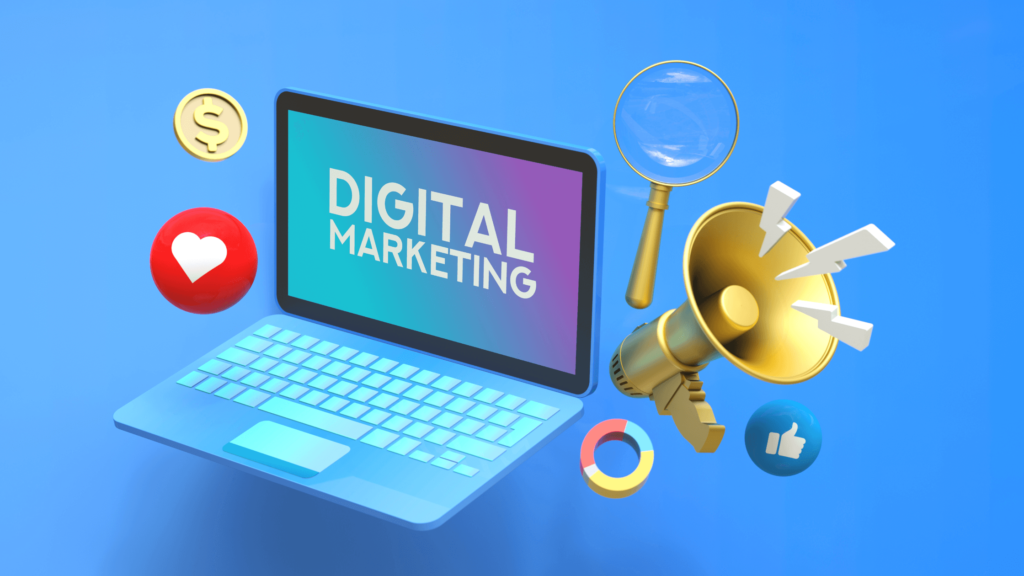Mastering Digital Marketing: Tips, Tools & Trend
Mastering Digital Marketing: Tips, Tools & Trends In today’s fast-paced digital world, businesses are constantly competing for attention. Whether you’re a startup or an established brand, digital marketing is the engine that drives online growth, visibility, and engagement. But mastering it requires more than just a social media presence or a website. You need the right strategies, tools, and awareness of emerging trends to stay ahead. In this guide, we’ll explore practical tips, essential tools, and the latest trends to help you master digital marketing in 2025. 🔍 What is Digital Marketing? Digital marketing is the use of digital channels like search engines, social media, email, websites, and mobile apps to promote products or services. It’s not just about being online — it’s about connecting with the right audience at the right time with the right message. Key components include: Search Engine Optimization (SEO) Pay-Per-Click Advertising (PPC) Social Media Marketing (SMM) Email Marketing Content Marketing Affiliate & Influencer Marketing Analytics & Reporting ✅ Top Tips for Mastering Digital Marketing 1. Define Your Goals Clearly Start with SMART goals — Specific, Measurable, Achievable, Relevant, and Time-bound. Whether it’s driving traffic, generating leads, or increasing sales, your entire strategy should align with these goals master digital marketing. . 2. Understand Your Target Audience Know their demographics, behavior, preferences, and pain points. Use tools like Google Analytics, Facebook Insights, or customer surveys to create buyer personas that guide your content and ad targeting. 3. Create High-Value Content Content is the backbone of digital marketing. Create blogs, videos, infographics, podcasts, and eBooks that educate, entertain, or solve problems. Quality content builds trust and boosts SEO rankings. 4. Be Consistent Across Channels Your branding, tone of voice, and messaging should be consistent across platforms. Whether it’s Instagram, your website, or email newsletters, consistency strengthens brand recognition. 5. Invest in SEO Optimize your website and content for search engines. Use long-tail keywords, write meta descriptions, and make sure your site loads fast. SEO brings organic traffic that lasts long-term master digital marketing. 6. Embrace Paid Advertising Running ads on Google, Meta (Facebook/Instagram), LinkedIn, or YouTube can provide instant visibility. Start small, test different ad creatives, and scale what works. 7. Monitor, Measure & Improve Use analytics to track campaign performance. Monitor KPIs like CTR, conversion rate, bounce rate, and ROI. Optimization is a continuous process. 🧰 Must-Have Tools for Digital Marketing 1. Google Analytics 4 Track and analyze user behavior on your website. GA4 offers powerful insights into your audience’s journey and helps you refine your strategy. 2. SEMRush / Ahrefs These are all-in-one SEO tools for keyword research, competitor analysis, backlink audits, and site performance monitoring. 3. Canva A design tool perfect for creating engaging social media posts, infographics, and presentation decks — even without design skills. 4. Meta Business Suite Manage and schedule content, run Facebook and Instagram ads, and monitor performance from one dashboard. 5. Mailchimp / Brevo (formerly Sendinblue) For email marketing automation, list management, and campaign tracking. Perfect for both beginners and pros. 6. ChatGPT / Jasper AI writing tools that help create content faster — from blog posts to ad copy and emails. 7. HubSpot A comprehensive CRM and inbound marketing platform that helps manage leads, automate marketing, and close sales. 🔮 Top Digital Marketing Trends in 2025 Digital marketing continues to evolve rapidly. Here’s what’s trending in 2025: 1. AI-Powered Marketing From content creation to customer service chatbots, AI tools like ChatGPT, Gemini, and Jasper are reshaping how brands communicate. AI helps personalize content, automate campaigns, and predict customer behavior. 2. Voice & Visual Search With the rise of voice assistants and visual tools like Google Lens, optimizing for voice and image search is crucial. Use conversational keywords and structured data master digital marketing. 3. Short-Form Video Dominance Reels, TikToks, and YouTube Shorts continue to dominate engagement. Short videos are perfect for storytelling, tutorials, and brand promotions. 4. Influencer Marketing Evolution Nano and micro-influencers (1K–10K followers) offer high engagement at lower costs. Brands now prefer authenticity over celebrity status. 5. Zero-Click Searches & Featured Snippets People often get answers from Google without clicking a link. Optimize your content to appear in featured snippets and answer boxes. 6. Privacy & Data Ethics With rising concerns over privacy, marketers must prioritize transparent data practices, cookie-less tracking, and compliance with GDPR/CCPA. 7. Omnichannel Experience Customers expect a seamless journey across web, mobile, email, and in-store. Omnichannel marketing ensures that every interaction feels consistent. 📈 Final Thoughts Mastering digital marketing is not about using every tool or chasing every trend — it’s about creating a strategy tailored to your audience and goals. Stay curious, keep testing, and never stop learning. With the right combination of skills, tools, and awareness of digital trends, any business can thrive in the digital landscape of 2025 and beyond. 💡 Bonus Tip: Don’t try to do everything at once. Focus on one or two digital marketing channels, master them, then expand. Consistency, quality, and strategy are the true game changers.

